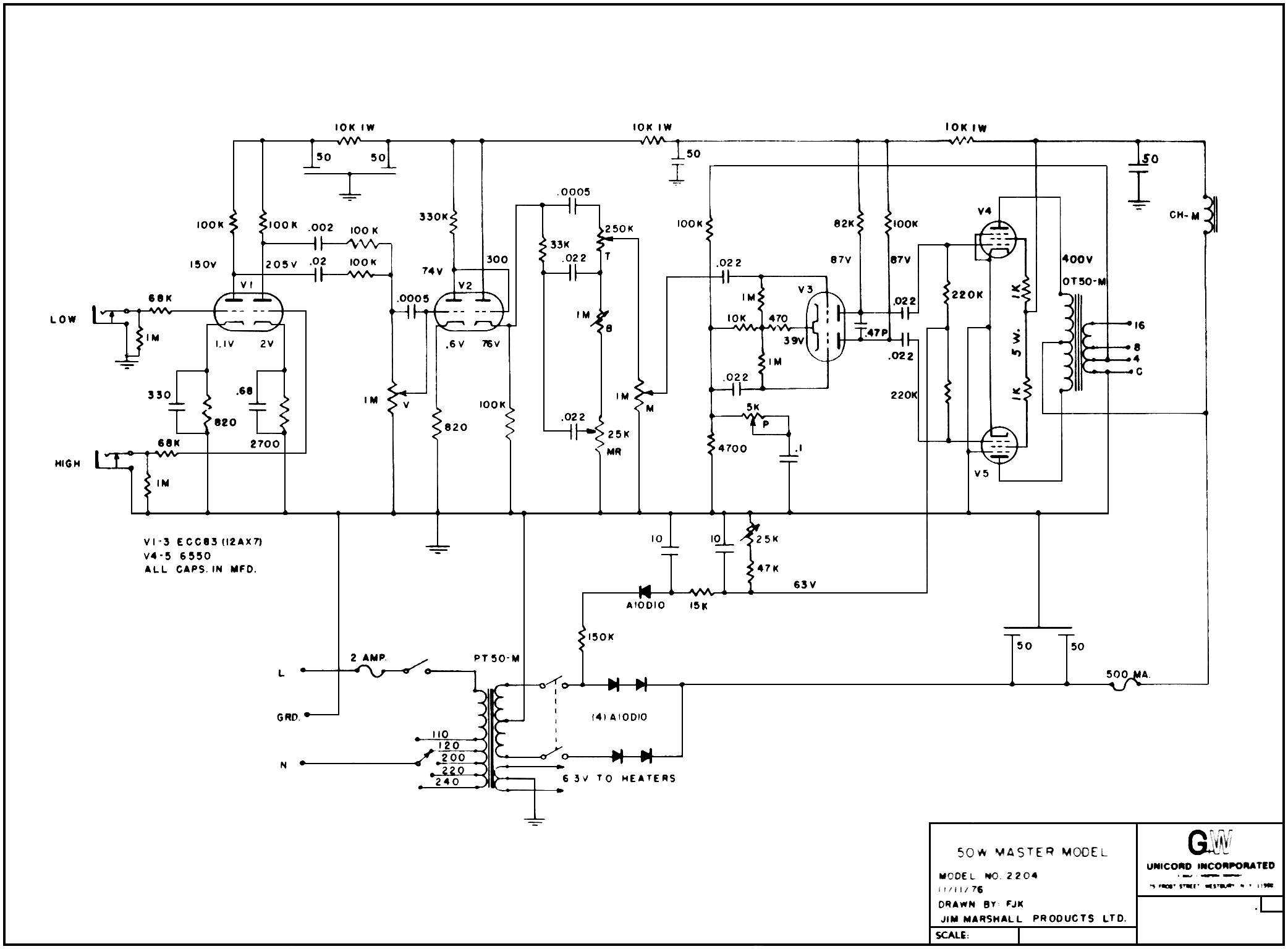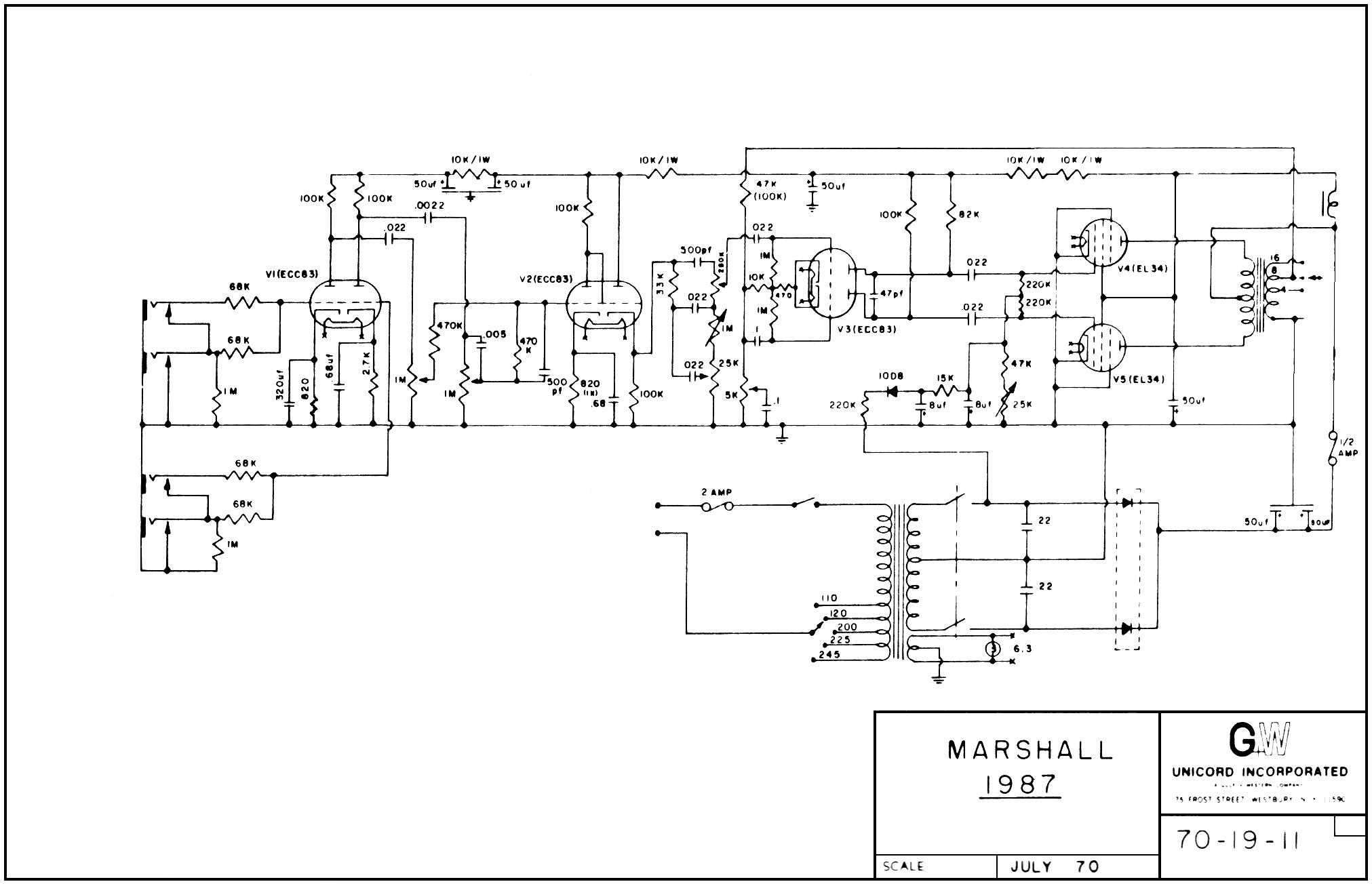I may be the only person interested in this, but since I continue to read glowing reviews of the 2204 low input ("gorgeous cleans", "perfect pedal platform", "its like a Hiwatt") I thought I'd do some more research into this.
I'm terrible at reading schematics, but I think this site helped me better understand these amps:
https://robrobinette.com/How_the_Marshall_JCM800_Works.htm
My understanding is that the signal path of the 2204 and and 1987 look like this:
2204 High:
V1B Gain w/ .68uF bypass --> Bright cap --> Volume --> V1A Cold Clipper Gain --> Bright cap --> V2A Warm Gain --> V2B Cathode Follower --> Tone --> Master Volume --> PI --> Power Tubes
2204 Low:
Bright cap --> Volume --> V1A Cold Clipper Gain --> Bright cap --> V2A Warm Gain --> V2B Cathode Follower --> Tone --> Master Volume --> PI --> Power Tubes
1987 High:
V1B Gain w/ .68uF bypass --> Volume --> Bright cap --> V2A Gain --> V2B Cathode Follower --> Tone --> Master Volume --> PI --> Power Tubes
As far as I can tell, most of the component values, especially those in the tone circuit and power circuit, are identical across. the 2204 and 1987. Ultimately, the 2204 Low is very similar to the 1987 High with a couple of important differences:
- The Preamp Volume is in the "wrong" place... its at the very front of the circuit, before the first gain stage. This *would* mean that the the 2204 Low Preamp Volume is the same as the Axe-FX Input Trim except that the Input Trim doesn't increase brightness as it rolls down, and the Input Trim only goes down to 0.100.
- The 2204 has a cold-biased V1A followed by a warm-biased V2A, whereas the 1987 has normally biased stages. This should give the 2204 a smoother overall character
- You've got a Master Volume available to use
From the above, the 2204 Low does look like its its own interesting thing. The Input Trim "set to .5" way to select the low input in the Axe-FX is designed with Fender circuits in mind, which do attenuate by half for the low input. However, it doesn't really work for the 2204 because the low input has one less gain stage and loses the bright bypass of that gain stage, so it should be much warmer than the result achieved by using the Input Trim.
I could be very wrong.


